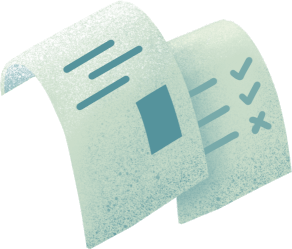Recently
《Interpretation of the National Standards for the Four Diagnostic Methods in Traditional Chinese Medicine》
was officially released
Let’s follow the guidelines to explore the interpretation of the standards~


01
Background of Standard Development
The methods of diagnosing diseases in Traditional Chinese Medicine (TCM) include four diagnostic methods: Wang Zhen (Observation), Wen Zhen (Listening and Smelling), Wen Zhen (Inquiry), and Qie Zhen (Palpation), collectively referred to as the “Four Diagnostics.” These methods have gradually formed and developed based on the long-term medical practices of physicians throughout history, and have been continuously supplemented and improved with the progress of the times, playing an important role in the collection of clinical information in TCM. Among them, Wang Zhen involves visually observing the patient’s spirit, color, shape, state, tongue appearance, excretions, and abnormal changes in the child’s finger pulse. Wen Zhen refers to the physician using their hearing or smell to understand the patient’s abnormal sounds, speech, and odors for disease diagnosis. Wen Zhen involves the physician asking the patient or accompanying person about the occurrence, development, treatment history, current symptoms, and other disease-related situations for diagnosis. Qie Zhen is when the physician uses their fingers or palms to touch, press, or palpate certain areas of the patient to understand the condition and diagnose the disease. Therefore, the standardization and normalization of the procedures and methods for the “Four Diagnostics” is a fundamental task to promote the construction of TCM disciplines, academic development, and improve the clinical diagnosis and treatment level of TCM, as well as a necessity for teaching, medical practice, research, management, and external communication.


02
Main Content of the Standards
GB/T 40665.1—2021《Standard for the Four Diagnostic Methods in TCM Part 1: Wang Zhen (Observation)》 specifies the terminology and definitions, basic operational procedures, and content for Wang Zhen in TCM’s “Four Diagnostics.” It is applicable to teaching, clinical practice, scientific research, medical administration, publishing, and domestic and international academic exchanges. It defines the main terms “Wang Zhen” and the meanings of “symptom,” “sign,” and “clinical manifestation.” It stipulates the basic operational procedures and content for Wang Zhen. Although some aspects of TCM Wang Zhen have evolved with the times, reflecting contemporary characteristics, the implementation and operational processes in clinical practice still predominantly follow traditional methods. Therefore, this standard is based on contemporary understandings of TCM Wang Zhen and summarizes and refines the operational procedures and methods used in long-term practice, hoping to be continuously revised, supplemented, and refined with the development of the times and advancements in technology, in conjunction with the latest and mature research findings.
GB/T 40665.2—2021《Standard for the Four Diagnostic Methods in TCM Part 2: Wen Zhen (Listening and Smelling)》 specifies the basic requirements and content for Wen Zhen in TCM’s “Four Diagnostics.” This document is applicable to teaching, clinical practice, scientific research, medical administration, information publishing, and domestic and international academic exchanges in the field of TCM. In the section on “Basic Requirements for Wen Zhen,” it first stipulates the basic requirements for the operational environment of Wen Zhen and the precautions for specific operations. The precautions for Wen Zhen operations include considerations for the examination room environment, the state of the practitioner, and privacy protection, which are included as normative appendices in Appendix A of this document.
GB/T 40665.3—2021《Standard for the Four Diagnostic Methods in TCM Part 3: Wen Zhen (Inquiry)》 specifies the basic requirements, content, and common symptoms for Wen Zhen in TCM’s “Four Diagnostics.” This document is applicable to teaching, clinical practice, scientific research, medical administration, information publishing, and domestic and international academic exchanges in the field of TCM. The basic requirements stipulate the basic operational environment for Wen Zhen, specific operational precautions, and the inquiry procedures and methods for initial and follow-up visits, acute or critical illnesses, and chronic disease patients. The content of Wen Zhen specifies the basic and specific inquiry content, procedures, and methods that should be asked of patients in clinical practice. Common symptoms are categorized into 11 major types related to cold-heat symptoms, sweating symptoms, pain symptoms, discomfort in the head, body, chest, abdomen, dietary and taste symptoms, urination and defecation symptoms, emotional symptoms, sleep symptoms, gynecological diseases, male diseases, and pediatric symptoms, with specific inquiry content, procedures, methods, and symptom classifications defined for each.
GB/T 40665.4—2021《Standard for the Four Diagnostic Methods in TCM Part 4: Qie Zhen (Palpation)》 specifies the scope, terminology, definitions, basic operational procedures, and content for Qie Zhen in TCM’s “Four Diagnostics.” It is applicable to teaching, clinical practice, scientific research, medical administration, information publishing, and domestic and international academic exchanges in the field of TCM. The standard divides Qie Zhen into two parts: pulse diagnosis and palpation, detailing the basic requirements, content, methods, and examination procedures for pulse diagnosis and palpation. It also stipulates precautions for Qie Zhen operations and reminders for patients.


03
Significance of Standard Implementation
The series of standards for the “Four Diagnostic Methods in TCM” can serve as a reference for standardizing the “Four Diagnostics” in TCM clinical practice and scientific research, providing a standard for the subjective and variable nature of TCM’s “Four Diagnostics,” thereby improving the level of TCM “Four Diagnostics” and providing reliable basis for TCM diagnosis and clinical research; it can serve as a basis for practical training in “Four Diagnostics” skills in TCM education, strengthening the standardization of practical teaching in TCM “Four Diagnostics”; and it can serve as a basis for the design of “Four Diagnostics” systems in the development of computer-assisted diagnosis and management systems in TCM, promoting the standardization and intelligent development of TCM diagnosis.
The release and implementation of the series of standards for the “Four Diagnostic Methods in TCM” have played a positive role in further improving the national standard system for TCM in China, promoting TCM medical care and health management, health statistics, quality assessment of TCM clinical practice, and domestic and international academic exchanges. It will also have a positive normative and guiding effect on returning TCM clinical practice to academic origins, adhering to TCM clinical thinking, and improving the level of TCM diagnosis and treatment, as well as promoting the quality assessment of TCM clinical practice, information publishing, and domestic and international academic exchanges.


Source: State Administration for Market Regulation

